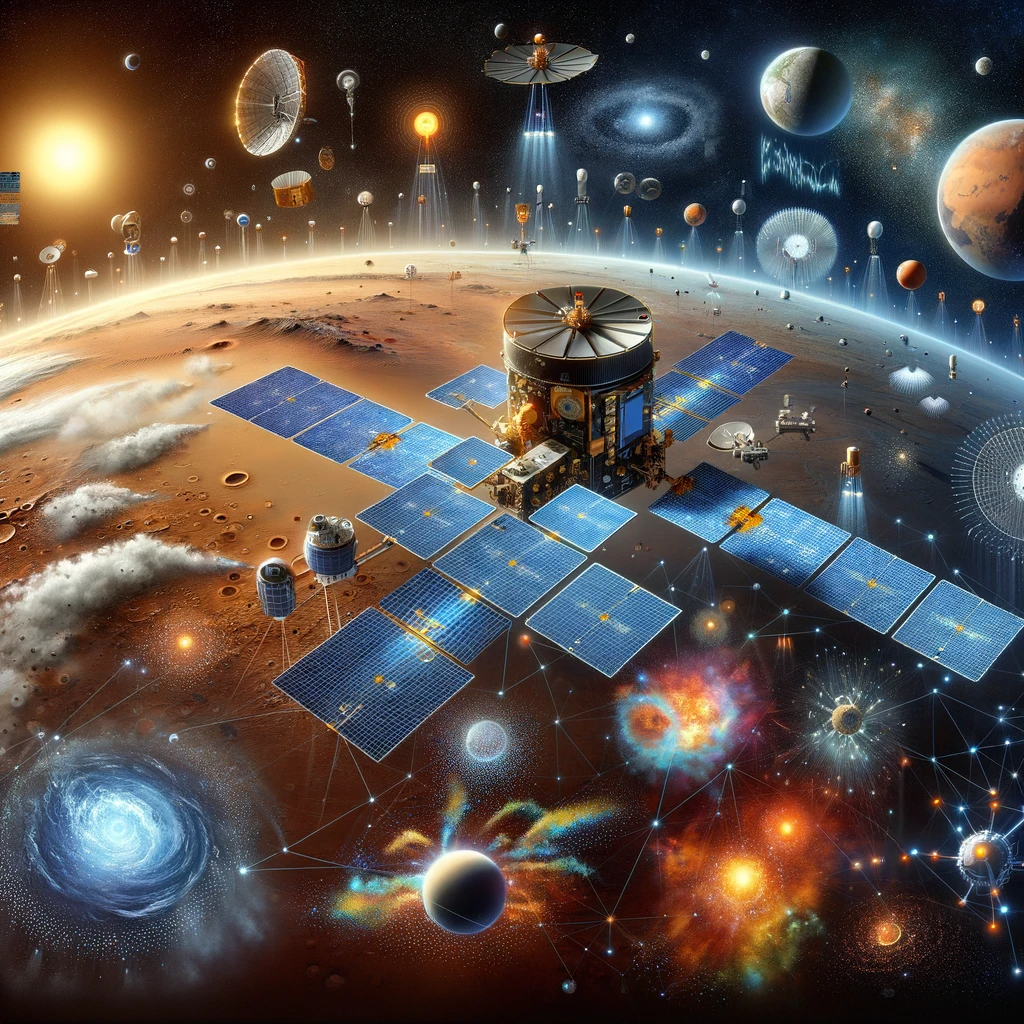MARS SMALLSAT MISSION & INSTRUMENTATION STUDIES FOR GLOBAL METEOROLOGY & SPACE WEATHER MONITORING - ALEJANDRO CARDESIN-MOINELO
We present here various scientific studies and efforts by the Martian atmospheric and magnetospheric science community, supporting the study and development of mission concepts with future small satellites and instrumentation that could be flown in orbit around Mars for meteorological and space weather monitoring, in line with the science and exploration priorities of ESA (SciSpaceE White Papers, Report & TerraNovae2030+) and NASA (MEPAG Future Program). Past and present Mars orbiters have provided great information on Mars surface and atmosphere, but focused mostly on targeted high-resolution measurements, lacking continuous global coverage.
Mars atmospheric phenomena (clouds and dust storms in particular) and space weather (solar wind, aurorae, radiation, …) require global, continuous, and simultaneous observations to fully understand the dynamic variability of Mars climate and environment. Several mission concepts involving satellite constellations have been studied in past years [Cardesin 2023, Montabone 2022&2021, Parfitt 2021]. These include satellite networks in different high-altitude orbit configurations, with great advantages for meteorology, space weather monitoring, and extra communication and navigation capabilities that could pave the way for future human exploration, providing services to other orbiters and surface assets. We summarize here the science case study for a minimal mission concept, based on [Montabone 2021], defining scientific priorities and requirements for a network of 3 low-mass, low-cost small satellites in areostationary orbit (equatorial, circular at ~17000km altitude). The small scientific payload would monitor atmospheric and surface parameters, aerosol (dust & ice) clouds, magnetic field and solar wind interactions. The nadir-viewing remote sensing payloads should at least include a visible camera (<5 km resolution), and a thermal infrared multi-band imager (<60 km resolution), potentially enhanced with a UV mapper or a near-IR high-resolution spectrometer. The basic space weather package would consist of a magnetometer, solar wind ion and/or electron detectors, and a space radiation monitor.
References
Cardesin 2023: Mars SmallSat missions: Spanish Science Consortium. Spanish Planetary Science Congress CPESS7
Montabone 2022: Continuous, Global, Simultaneous Mars Weather from Orbit, 7th MAMO
Montabone 2021: A Paradigm Shift in Mars Meteorology, EPSC 2021, 625.
Parfitt 2021: Small Mars Mission Architecture Study, Adv. Astron. 2021.
NASA: Mars Exploration Program Analysis Group, Future Program, April 2023
ESA: SciSpaceE White Papers & Report, 2023; Strategy Roadmap TerraNovae2030+, 2022
|









































 Sign in
Sign in
 Science & Technology
Science & Technology